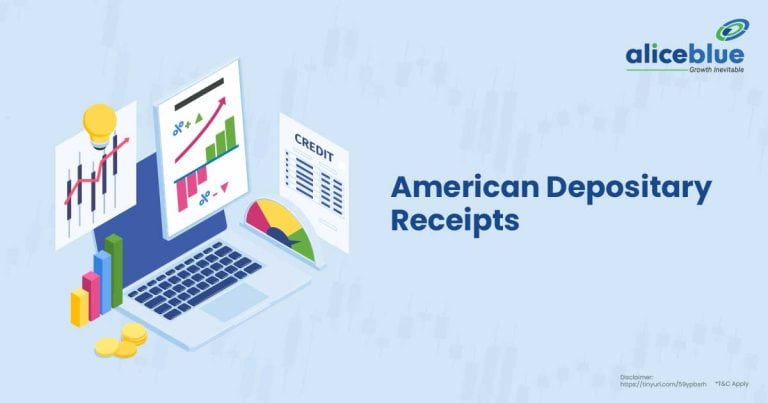The below table shows a list of top-performing Small Cap Funds in 5 Years based on AUM, NAV and minimum SIP.
| Name | AUM (Cr) | NAV (Rs) | Minimum SIP (Rs) |
| Nippon India Small Cap Fund | 60372.55 | 199.38 | 100 |
| Quant Small Cap Fund | 22967.17 | 300.26 | 1000 |
| Kotak Small Cap Fund | 17507.11 | 322.06 | 100 |
| DSP Small Cap Fund | 16084.62 | 219.46 | 100 |
| Canara Rob Small Cap Fund | 11499.07 | 44.78 | 1000 |
| Tata Small Cap Fund | 8448.91 | 46.82 | 1500 |
| Invesco India Smallcap Fund | 4580.54 | 44.61 | 100 |
| Edelweiss Small Cap Fund | 3986.11 | 48.81 | 100 |
| Union Small Cap Fund | 1533.50 | 54.66 | 100 |
| Bank of India Small Cap Fund | 1236.83 | 54.42 | 100 |
Content:
- Introduction to Top Performing Small Cap Funds in 5 Years
- What Are Small Cap Funds?
- Features Of Top Performing Small Cap Funds in 5 Years
- Best Performing Small Cap Funds in 5 Years
- Top Performing Small Cap Funds in 5 Years In India
- Top Performing Small Cap Funds in 5 Years
- Factors To Consider When Investing In Top Performing Small Cap Funds in 5 Years
- How To Invest In Top Performing Small Cap Funds in 5 Years?
- Advantages Of Investing In Top Performing Small Cap Funds in 5 Years?
- Risks Of Investing In Top Performing Small Cap Funds in 5 Years?
- Importance of Small Cap Funds
- How Long to Stay Invested in Small Cap Funds?
- Tax Implications of Investing in Small-Cap Funds
- Future of Small Cap Funds
- Top Performing Small Cap Funds in 5 Years – FAQs
Introduction to Top Performing Small Cap Funds in 5 Years
Nippon India Small Cap Fund
Nippon India Small Cap Fund is a Small Cap mutual fund scheme from Nippon India Mutual Fund. This fund has been operational for 11 years and 8 months, having been launched on December 31, 2012.
Nippon India Small Cap Fund falls under the Small Cap category with an AUM of ₹60,372.55 crores, a 5-year CAGR of 40.48%, an exit load of 1% and an expense ratio of 0.63%. The SEBI risk category is Very High. Its asset allocation includes 4.15% in Cash & Equivalents and 95.85% in Equity.

Quant Small Cap Fund
Quant Small Cap Fund is a Small Cap mutual fund scheme from Quant Mutual Fund. This fund has been operational for 11 years and 8 months, having been launched on January 1, 2013.
Quant Small Cap Fund falls under the Small Cap category with an AUM of ₹22,967.17 crores, a 5-year CAGR of 52.34%, an exit load of 1% and an expense ratio of 0.64%. The SEBI risk category is Very High. Its asset allocation includes 0.24% in Futures & Options, 0.97% in Treasury Bills, 14.74% in Cash & Equivalents and 84.05% in Equity.
Kotak Small Cap Fund
Kotak Small Cap Fund is a Small Cap mutual fund scheme from Kotak Mahindra Mutual Fund. This fund has been operational for 11 years and 7 months, having been launched on January 1, 2013.
Kotak Small Cap Fund falls under the Small Cap category with an AUM of ₹17,507.11 crores, a 5-year CAGR of 36.17%, an exit load of 1% and an expense ratio of 0.49%. The SEBI risk category is Very High. Its asset allocation includes 3.76% in Cash & Equivalents and 96.24% in Equity.
DSP Small Cap Fund
DSP Small Cap Fund is a Small Cap mutual fund scheme from DSP Mutual Fund. This fund has been operational for 11 years and 7 months, having been launched on January 1, 2013.
DSP Small Cap Fund falls under the Small Cap category with an AUM of ₹16,084.62 crores, a 5-year CAGR of 34.52%, an exit load of 1% and an expense ratio of 0.81%. The SEBI risk category is Very High. Its asset allocation includes 6.40% in Cash & Equivalents and 93.60% in Equity.
Canara Robeco Small Cap Fund
Canara Robeco Small Cap Fund is a Small Cap mutual fund scheme from Canara Robeco Mutual Fund. This fund has been operational for 5 years and 7 months, having been launched on January 25, 2019.
Canara Robeco Small Cap Fund falls under the Small Cap category with an AUM of ₹11,499.07 crores, a 5-year CAGR of 39.06%, an exit load of 1% and an expense ratio of 0.42%. The SEBI risk category is Very High. Its asset allocation includes 0.08% in Rights, 3.63% in Cash & Equivalents and 96.29% in Equity.
Tata Small Cap Fund
Tata Small Cap Fund is a Small Cap mutual fund scheme from Tata Mutual Fund. This fund has been operational for 5 years and 10 months, having been launched on November 12, 2018.
Tata Small Cap Fund falls under the Small Cap category with an AUM of ₹8,448.91 crores, a 5-year CAGR of 37.26%, an exit load of 1% and an expense ratio of 0.30%. The SEBI risk category is Very High. Its asset allocation includes 0.11% in REITs & InvIT, 7.59% in Cash & Equivalents and 92.30% in Equity.
Invesco India Small Cap Fund
Invesco India Small Cap Fund is a Small Cap mutual fund scheme from Invesco Mutual Fund. This fund has been operational for 5 years and 11 months, having been launched on October 10, 2018.
Invesco India Small Cap Fund falls under the Small Cap category with an AUM of ₹4,580.54 crores, a 5-year CAGR of 36.63%, an exit load of 1% and an expense ratio of 0.41%. The SEBI risk category is Very High. Its asset allocation includes 1.81% in Cash & Equivalents and 98.19% in Equity.
Edelweiss Small Cap Fund
Edelweiss Small Cap Fund is a Small Cap mutual fund scheme from Edelweiss Mutual Fund. This fund has been operational for 5 years and 7 months, having been launched on February 7, 2019.
Edelweiss Small Cap Fund falls under the Small Cap category with an AUM of ₹3,986.11 crores, a 5-year CAGR of 37.48%, an exit load of 1% and an expense ratio of 0.40%. The SEBI risk category is Very High. Its asset allocation includes 2.97% in Cash & Equivalents and 97.03% in Equity.
Union Small Cap Fund
Union Small Cap Fund is a Small Cap mutual fund scheme from Union Mutual Fund. This fund has been operational for 10 years and 3 months, having been launched on May 20, 2014.
Union Small Cap Fund falls under the Small Cap category with an AUM of ₹1,533.50 crores, a 5-year CAGR of 34.39%, an exit load of 1% and an expense ratio of 0.86%. The SEBI risk category is Very High. Its asset allocation includes 0.07% in Treasury Bills, 3.69% in Cash & Equivalents and 96.24% in Equity.
Bank of India Small Cap Fund
Bank of India Small Cap Fund is a Small Cap mutual fund scheme from Bank of India Mutual Fund. This fund has been operational for 5 years and 9 months, having been launched on December 19, 2018.
Bank of India Small Cap Fund falls under the Small Cap category with an AUM of ₹1,236.83 crores, a 5-year CAGR of 42.05%, an exit load of 1% and an expense ratio of 0.55%. The SEBI risk category is Very High. Its asset allocation includes 0.01% in Treasury Bills, 3.88% in Cash & Equivalents and 96.10% in Equity.
What Are Small Cap Funds?
Small Cap Funds are equity mutual funds that primarily invest in stocks of small-sized companies, typically ranked below 250 in terms of market capitalization. These funds aim to capitalize on the high growth potential of emerging companies that are in the early stages of their business lifecycle.
Small Cap funds invest in companies that are relatively new or operate in niche markets. These companies often have the potential for rapid growth but also carry higher risks compared to larger, more established companies.
These funds can offer potentially higher returns compared to large-cap or mid-cap funds but also come with higher volatility and risk. They are suitable for investors with a high-risk appetite and a long-term investment horizon.
Features Of Top Performing Small Cap Funds in 5 Years
The main features of top-performing Small Cap Funds in 5 years include exposure to small-sized companies, high growth potential, higher risk and volatility, professional management and diversification within the small-cap segment. These funds offer opportunities to invest in emerging companies with significant growth prospects.
- Small-cap focus: These funds primarily invest in small-sized companies, typically ranked below 250 in terms of market capitalization, offering exposure to businesses in the early stages of growth.
- High growth potential: Small-cap companies often have higher growth potential compared to larger companies, as they have more room for expansion and can be more agile in adapting to market changes.
- Higher risk and volatility: Small-cap stocks tend to be more volatile and carry higher risk compared to large-cap or mid-cap stocks, leading to the potential for significant gains or losses.
- Professional management: Small Cap funds are managed by experienced fund managers who conduct thorough research to identify promising small-sized companies with strong growth prospects.
Best Performing Small Cap Funds in 5 Years
The table below shows the best Performing Small Cap Funds in 5 Years based on the lowest to highest expense ratio.
| Name | Expense Ratio (%) | Minimum SIP (Rs) |
| Tata Small Cap Fund | 0.3 | 1500 |
| Edelweiss Small Cap Fund | 0.4 | 100 |
| Invesco India Smallcap Fund | 0.41 | 100 |
| Canara Rob Small Cap Fund | 0.42 | 1000 |
| Kotak Small Cap Fund | 0.49 | 100 |
| Bank of India Small Cap Fund | 0.55 | 100 |
| Nippon India Small Cap Fund | 0.63 | 100 |
| Quant Small Cap Fund | 0.64 | 1000 |
| DSP Small Cap Fund | 0.81 | 100 |
| Union Small Cap Fund | 0.86 | 100 |
Top Performing Small Cap Funds in 5 Years In India
The table below shows Top Performing Small Cap Funds in 5 Years In India Based on the Highest 3Y CAGR.
| Name | CAGR 3Y (Cr) | Minimum SIP (Rs) |
| Quant Small Cap Fund | 36.65 | 1000 |
| Nippon India Small Cap Fund | 35.69 | 100 |
| Tata Small Cap Fund | 31.60 | 1500 |
| Bank of India Small Cap Fund | 31.38 | 100 |
| Canara Rob Small Cap Fund | 30.63 | 1000 |
| Invesco India Smallcap Fund | 30.51 | 100 |
| Edelweiss Small Cap Fund | 30.36 | 100 |
| DSP Small Cap Fund | 29.00 | 100 |
| Kotak Small Cap Fund | 25.72 | 100 |
| Union Small Cap Fund | 25.46 | 100 |
Top Performing Small Cap Funds in 5 Years
The table below shows Top Performing Small Cap Funds in 5 Years Based on exit load, i.e., the fee that the AMC charges investors when they exit or redeem their fund units.
| Name | AMC | Exit Load (%) |
| Quant Small Cap Fund | Quant Money Managers Limited | 1 |
| Nippon India Small Cap Fund | Nippon Life India Asset Management Limited | 1 |
| Tata Small Cap Fund | Tata Asset Management Private Limited | 1 |
| Bank of India Small Cap Fund | Bank of India Investment Managers Private Limited | 1 |
| Canara Rob Small Cap Fund | Canara Robeco Asset Management Company Limited | 1 |
| Invesco India Smallcap Fund | Invesco Asset Management Company Pvt Ltd. | 1 |
| Edelweiss Small Cap Fund | Edelweiss Asset Management Limited | 1 |
| DSP Small Cap Fund | DSP Investment Managers Private Limited | 1 |
| Kotak Small Cap Fund | Kotak Mahindra Asset Management Company Limited | 1 |
| Union Small Cap Fund | Union Asset Management Company Pvt. Ltd. | 1 |
Factors To Consider When Investing In Top Performing Small Cap Funds in 5 Years
The main factors to consider when investing in top-performing Small Cap Funds in 5 years include fund performance, expense ratio, fund manager expertise, portfolio composition and risk tolerance. These factors can significantly impact the fund’s performance and suitability for your portfolio.
- Fund performance: Analyze the fund’s historical returns over various periods and compare them with its benchmark index and category average. Look for consistent performance.
- Expense ratio: Compare expense ratios across different small-cap funds. Lower expenses can contribute to better overall returns, but also consider the fund’s performance and strategy.
- Fund manager expertise: Evaluate the fund manager’s experience and track record in managing small-cap funds. Their ability to identify promising small-sized companies is crucial.
- Portfolio composition: Examine the fund’s sector allocation and top holdings. Ensure the fund maintains a true small-cap focus and is sufficiently diversified across sectors.
- Risk measures: Assess risk metrics such as standard deviation and Sharpe ratio to understand the fund’s volatility and risk-adjusted returns.
How To Invest In Top Performing Small Cap Funds in 5 Years?
To invest in top-performing Small Cap Funds in 5 years, start by researching and comparing different funds based on their performance, expense ratios and investment strategies. Once you’ve selected a fund that aligns with your financial goals and risk tolerance, you can invest through Alice Blue.
Alice Blue is a user-friendly online investment platform that provides tools and resources to help you make informed investment decisions. You can choose to invest a lump sum amount or opt for a Systematic Investment Plan (SIP), which allows you to invest a fixed amount regularly.
For most investors, a SIP is recommended as it helps in rupee cost averaging and reduces the impact of market volatility on your investment over time. Remember to review and rebalance your investment periodically to ensure it remains aligned with your financial goals.
Advantages Of Investing In Top Performing Small Cap Funds in 5 Years?
The main advantages of investing in top-performing Small Cap Funds in 5 years include high growth potential, exposure to emerging companies, the potential for superior returns, and diversification benefits. These funds offer opportunities to invest in companies at the early stages of their growth cycle.
- High growth potential: Small-cap companies often have higher growth potential compared to larger companies, as they have more room for expansion and can be more agile in adapting to market changes.
- Exposure to emerging companies: Small-cap funds provide access to companies that could become future market leaders. Investing in these potential future giants early can lead to substantial long-term gains.
- Potential for superior returns: Historically, small-cap stocks have outperformed large-cap stocks over long periods, offering the potential for higher returns, albeit with higher risk.
- Diversification: Including small-cap funds in a portfolio can enhance overall diversification, as small-cap stocks often behave differently from large-cap stocks in various market conditions.
Risks Of Investing In Top Performing Small Cap Funds in 5 Years?
The main risks of investing in top-performing Small Cap Funds in 5 years include higher volatility, increased risk, liquidity issues and potential for higher losses. These factors can impact the fund’s performance and lead to significant fluctuations in returns, making them suitable only for high-risk-tolerant investors.
- Higher volatility: Small-cap stocks tend to be more volatile than large-caps, leading to the potential for higher short-term fluctuations in fund value. This can result in significant gains or losses over short periods.
- Increased risk: Small-cap companies are often less established and more vulnerable to economic downturns, competitive pressures, and business challenges, increasing the risk of investment losses.
- Liquidity issues: Small-cap stocks may have lower trading volumes, potentially making it difficult for fund managers to buy or sell large quantities without impacting stock prices.
- Potential for higher losses: The higher risk associated with small-cap stocks means these funds can experience steeper declines during market downturns compared to large-cap or mid-cap funds.
Importance of Small Cap Funds
The main importance of Small Cap Funds lies in their potential to generate high returns, provide exposure to emerging growth stories, offer diversification benefits and capitalize on market inefficiencies. These funds play a crucial role for certain investors seeking high-growth opportunities.
- High return potential: Small Cap Funds offer the possibility of generating superior returns by investing in companies with high growth potential in their early stages.
- Exposure to future leaders: These funds provide access to companies that could become tomorrow’s market leaders, allowing investors to participate in their growth journey.
- Diversification benefits: Including Small Cap Funds in a portfolio can enhance overall diversification, as they often have a low correlation with large-cap stocks.
- Market inefficiency exploitation: Small-cap stocks are often less researched, creating opportunities for fund managers to identify undervalued companies with strong growth prospects.
How Long to Stay Invested in Small Cap Funds?
The ideal investment horizon for Small Cap Funds is typically 7-10 years or longer. This extended time frame allows investors to potentially benefit from the high growth potential of small-cap companies while smoothing out the significant short-term volatility that these funds can experience.
A longer investment period also aligns with the growth cycle of small companies, which may take time to realize their full potential. Regular review and rebalancing of your investment are important, but it’s crucial to avoid making hasty decisions based on short-term market fluctuations, which can be more pronounced in small-cap funds.
Tax Implications of Investing in Small-Cap Funds
Small Cap Funds are taxed as equity mutual funds in India. For holding periods up to 1 year, gains are considered short-term capital gains and taxed at 15%. For holding periods over 1 year, long-term capital gains up to ₹1 lakh per financial year are tax-free.
Long-term capital gains exceeding ₹1 lakh are taxed at 10% without indexation benefits. It’s important to note that these tax rates are subject to change based on government policies. The tax efficiency of equity funds like small-cap funds can make them attractive for long-term investors.
Future of Small Cap Funds
The future of Small Cap Funds in India looks promising, driven by factors such as the growing entrepreneurial ecosystem, increasing financialization of savings and the potential for discovering hidden gems in the vast small-cap universe. As the Indian economy evolves, these funds may find more opportunities to capitalize on emerging growth stories.
However, their performance will continue to be influenced by overall economic conditions, regulatory changes, and market sentiment towards smaller companies. The success of Small Cap Funds will likely depend on fund managers’ ability to identify promising companies early and navigate the higher risks associated with small-cap investing.

Top Performing Small Cap Funds in 5 Years – FAQs
Small Cap Funds are mutual funds that primarily invest in companies with small market capitalizations, typically ranked below the top 250 companies in terms of market value. These funds offer high growth potential but come with increased volatility and risk due to smaller businesses’ sensitivity to market changes.
Top Performing Small Cap Funds in 5 Years #1: Nippon India Small Cap Fund
Top Performing Small Cap Funds in 5 Years #2: Quant Small Cap Fund
Top Performing Small Cap Funds in 5 Years #3: Kotak Small Cap Fund
Top Performing Small Cap Funds in 5 Years #4: DSP Small Cap Fund
Top Performing Small Cap Funds in 5 Years #5: Canara Rob Small Cap Fund
These funds are listed based on the Highest AUM.
The best-performing small cap funds based on expense ratio over the past five years include Tata Small Cap Fund, Edelweiss Small Cap Fund, Invesco India Small Cap Fund, Canara Rob Small Cap Fund and Kotak Small Cap Fund. These funds have delivered strong returns while maintaining competitive expense ratios.
To invest in top-performing Small Cap Funds, research funds using financial websites and compare their returns and strategies. Then, open an account with Alice Blue, a user-friendly investment platform. Choose between a lump sum investment or starting a Systematic Investment Plan (SIP) for regular investing.
Investing in top-performing Small Cap Funds can be good for investors with a high-risk tolerance and long-term horizon (7-10 years or more). They offer the potential for high returns but carry significant risk. Consider your investment goals and overall portfolio allocation before investing.
Yes, you can buy top-performing Small Cap Funds through various online platforms like Alice Blue or directly from fund houses. These funds are typically open-ended, allowing purchases on any business day. Consider your investment goals and risk tolerance before investing.
We hope you’re clear on the topic, but there’s more to explore in stocks, commodities, mutual funds, and related areas. Here are important topics to learn about.
Disclaimer: The above article is written for educational purposes and the companies’ data mentioned in the article may change with respect to time. The securities quoted are exemplary and are not recommendatory.








